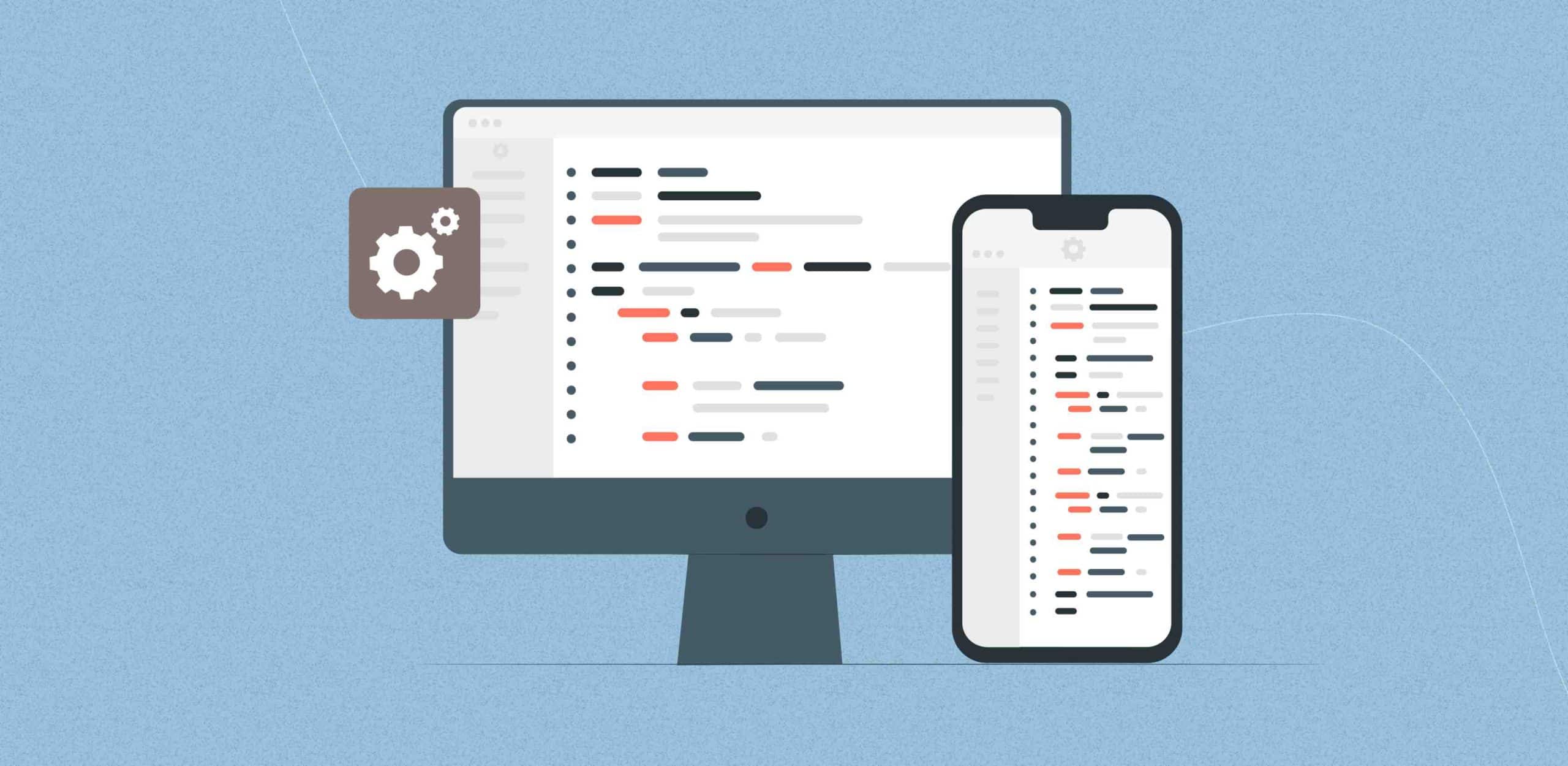Cross-platform app development allows developers to create apps that can run seamlessly on multiple platforms. With multiple platforms such as iOS, Android, and Windows, developing separate native apps for each platform can be time-consuming and costly, and this is where cross-platform comes into play, offering a cost-effective solution.
In this comprehensive blog post, we will delve into the world of cross-platform apps, exploring what it is, its different types, benefits, and how it differs from native apps. We will also take a closer look at popular cross-platform app development frameworks and provide insights on how to develop a cross-platform app. Finally, we will help you determine if cross-platform mobile app development is suitable for your product or business needs.
What is Cross-platform app development?
Cross-platform app development is the process of creating mobile applications that can run on multiple platforms or operating systems, such as iOS, Android, and Windows, using a single codebase. Instead of building separate apps for each platform, it enables developers to write code once and run it on multiple platforms, saving time and effort in development and maintenance.
One of the key technologies used in cross-platform app development is a framework that provides a common platform for developers to write code that can be compiled into native code for different platforms. These frameworks often include libraries, tools, and pre-built UI components that help streamline the app development process.
What are the different types of Cross-platform apps?
Hybrid apps: Hybrid apps are built using web technologies such as HTML5, CSS, and JavaScript. They are wrapped in a native container that allows them to be installed and run on a device like a native app. They can be distributed through app stores like native apps or accessed through a web browser. Hybrid apps offer a cost-effective way to create apps for multiple platforms using a single codebase, but may not provide the same level of performance and user experience as native apps.
Progressive Web Apps (PWAs): PWAs are web apps that can be installed on a user’s home screen and accessed offline. They are built using web technologies such as HTML5, CSS, and JavaScript, and are designed to be responsive and work across different devices and platforms. PWAs offer the advantage of being easily accessible through a web browser without the need for installation, but may not have the same level of integration with a device’s hardware and software as native apps.
What are the benefits of Cross-platform app development?
Cross-platform app development offers several benefits, making it an attractive choice for businesses and developers alike. Let’s see what are some of the key benefits:
Cost-effective: One of the primary benefits of cross-platform development is its cost-effectiveness. By using a single codebase to develop apps for multiple platforms, businesses can save on development costs, as there is no need to develop separate apps for each platform. This can result in significant cost savings, especially for small and medium-sized enterprises (SMEs) with limited budgets.
Faster development: Cross-platform app development allows for faster development as developers can write code once and use it across different platforms. This eliminates the need to write platform-specific code, reducing development time and effort. Moreover, many cross-platform development frameworks provide pre-built UI components and libraries, which further speeds up the development process.
Wider reach: Cross-platform app development enables businesses to reach a wider audience, as the app can be deployed on multiple platforms. This means that users of different devices, such as iOS, Android, and Windows, can all access and use the app, increasing the app’s reach and potential user base.
Easier maintenance: Maintaining multiple native apps can be time-consuming and costly, as each app requires separate updates, bug fixes, and maintenance efforts. Cross-platform app development simplifies the maintenance process, as updates and bug fixes can be made in the shared codebase, and changes can be reflected across all platforms simultaneously.
Faster time to market: With cross-platform app development, businesses can get their app to market faster, as the development process is streamlined and the app can be deployed on multiple platforms simultaneously. This allows businesses to stay competitive and seize market opportunities more quickly.
Ready to launch your app on multiple platforms? Contact us for expert cross-platform development.
Cross-platform app development vs Native app development
Native app development involves creating separate apps for each platform, such as iOS, Android, and Windows, using platform-specific programming languages and tools, such as Swift or Objective-C for iOS, Java or Kotlin for Android, and C# for Windows. Native apps have access to all the platform-specific features and capabilities, providing the best possible performance and user experience. However, they require separate development efforts for each platform, resulting in higher costs and longer development timelines.
On the other hand, cross-platform app development involves creating a single codebase that can be shared across multiple platforms, eliminating the need for separate development efforts. This codebase is typically written in a common programming language, such as JavaScript or C#, and then compiled into platform-specific code using a cross-platform framework. While cross-platform apps may have some performance limitations and limited access to platform-specific features, they offer advantages in terms of cost-efficiency, faster development, wider reach, and easier maintenance.
The main difference between cross-platform app development and native app development is the approach to writing code. In native app development, platform-specific code is written separately for each platform, while in cross-platform app development, a single codebase is shared across multiple platforms. Native apps have access to all the platform-specific features, while cross-platform apps may have some limitations in this regard. However, it offers the advantage of cost savings, faster development, and wider reach.
What are the Cross-platform app development frameworks?
Cross-platform app development frameworks are tools or platforms that enable developers to write code once and use it across multiple platforms. These frameworks provide a set of libraries, UI components, and other tools that simplify the development process and allow for the compilation of the code into platform-specific apps. Here are some of the popular cross-platform app development frameworks:
React Native: Developed by Facebook, React Native is a widely used framework for cross-platform app development. It uses JavaScript and React, a popular JavaScript library for building user interfaces, to create native-like apps for iOS, Android, and Windows platforms. It allows for the reuse of code across platforms, resulting in faster development and cost savings.
Xamarin: Xamarin, now a part of Microsoft, is a cross-platform app development framework that uses C# and .NET to create apps for iOS, Android, and Windows platforms. It allows for the creation of native apps with access to all platform-specific features, and it also provides a shared codebase for efficient cross-platform development.
Flutter: Flutter is a UI toolkit for building natively compiled apps for iOS, Android, and Windows from a single codebase, developed by Google. It uses Dart, a language developed by Google, and provides a rich set of pre-built UI components, resulting in fast and visually appealing apps.
PhoneGap/Cordova: PhoneGap, also known as Apache Cordova, is an open-source framework for building cross-platform mobile apps using HTML, CSS, and JavaScript. It allows for the creation of hybrid apps that run within a WebView, a native component that displays web content, on various platforms.
Ionic: Ionic is a popular open-source framework for cross-platform app development that uses web technologies such as HTML, CSS, and JavaScript. It provides a set of pre-built UI components, and it can be used in combination with other frameworks like Angular or React for building feature-rich apps.
How to develop a Cross-platform app?
Cross-platform app development involves several steps, from planning and design to development and deployment. Here are the key steps to developing a cross-platform app:
Define the app requirements: The first step in cross-platform app development is to define the app requirements. This includes identifying the target platforms, understanding the target audience, and determining the features and functionality of the app.
Choose a Cross-platform app development framework
Based on the app requirements and the target platforms, choose a suitable cross-platform app development framework. Consider factors such as the programming language, UI components, performance, and community support when making the decision.
Design the user interface: Once the framework is chosen, design the user interface to create an engaging and user-friendly app. Consider the unique design guidelines and requirements of each platform to ensure a consistent and optimized user experience.
Write the code: Using the chosen cross-platform app development framework, write the code for the app. This involves creating the app logic, integrating with APIs and backend services, and implementing the user interface using the UI components provided by the framework.
Test and debug: In the cross-platform app development process, after writing the code, thoroughly test the app on different devices and platforms to identify and fix any bugs or issues. This includes testing for functionality, performance, and usability to ensure a smooth and seamless user experience.
Optimize for performance: Cross-platform apps may face performance limitations compared to native apps due to the abstraction layer provided by the framework. Optimize the app for performance by identifying and addressing any performance bottlenecks, such as slow loading times or laggy animations.
Customize for each platform: While cross-platform apps aim to provide a consistent user experience across platforms, there may be some platform-specific features or design elements that need customization. Tailor the app for each platform to ensure optimal performance and user satisfaction.
Deploy and publish: In cross-platform app development, once the app is tested and optimized, it’s time to deploy and publish it to the respective app stores for distribution. Follow the guidelines and requirements of each app store to ensure a smooth submission and approval process.
Is Cross-platform app development suitable for your product?
Cross-platform app development can be a suitable choice for many products, but it may not be the best fit for every situation. Consider the following factors to determine if cross-platform app development is suitable for your product:
Time and budget constraints: If you have limited time and budget for app development, cross-platform app development can be a cost-effective solution. It allows for the reuse of code across platforms, resulting in faster development and cost savings compared to native app development.
Wide platform reach: If your target audience is spread across multiple platforms, such as iOS, Android, and Windows, cross-platform app development can ensure wider platform reach with a single codebase. It allows you to cater to a larger audience without the need for separate development efforts for each platform.
Simple app requirements: If your app has simple requirements and does not require extensive access to platform-specific features, cross-platform app development can be a viable option. However, if your app requires complex and platform-specific functionalities, native app development may be a better choice.
Limited resources: If you have limited resources, such as a small development team or limited technical expertise, cross-platform app development can be a more feasible option. It provides a simpler development process with a single codebase and may require less technical expertise compared to native app development.
Future scalability: If you plan to scale your app in the future and expand to different platforms, cross-platform app development can provide the flexibility to do so without starting from scratch. It allows for easy updates and modifications to the codebase to accommodate future platform expansions.
Conclusion
Let’s transform your business for a change that matters.
F. A. Q.
Do you have additional questions?
What is cross-platform app development?
Cross-platform app development is the process of creating mobile applications that can run on multiple platforms, such as iOS, Android, and Windows, using a single codebase.
What are the benefits of cross-platform app development?
The benefits include cost savings, faster development time, wider platform reach, easier maintenance, and flexibility for future updates and modifications.
How is cross-platform app development different from native app development?
Cross-platform app development uses a single codebase to create apps that can run on multiple platforms, while native app development involves creating separate codebases for each platform. Cross-platform app development offers faster development, cost savings, and wider platform reach, while native app development allows for greater platform-specific functionalities and performance.
Which are the popular cross-platform app development frameworks?
Some popular frameworks are React Native, Flutter, Xamarin, and PhoneGap. These frameworks offer different features and capabilities, and the choice of framework depends on the specific requirements of the app, target platforms, and the development team’s expertise.
Which development approach is suitable to choose if the budget is limited?
If you have a limited budget, it is reasonable to choose cross-platform app development, as it allows to create one app that will be compatible with multiple platforms. This way you won’t have to hire two teams of developers, in this way you will be possible to save a significant amount of time and money.














